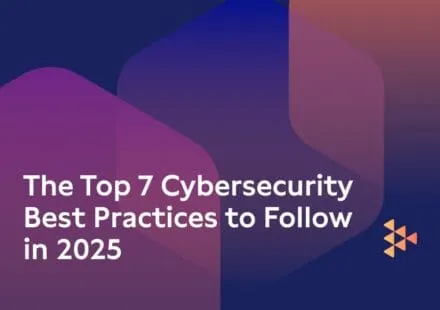As organizations grow increasingly reliant on digital tools and online operations, cybersecurity is no longer optional—it’s a necessity. Protecting sensitive data, maintaining customer trust, and ensuring uninterrupted operations hinge on a strong cybersecurity foundation. Whether you’re just starting or looking to strengthen your current measures, understanding cybersecurity is the first step.
What is Cybersecurity?
Cybersecurity refers to the practices, technologies, and strategies designed to safeguard systems, networks, and data from cyber threats. It involves:
- Preventing unauthorized access to sensitive information.
- Detecting potential breaches before they cause harm.
- Responding effectively to minimize damage and recover quickly.
A strong cybersecurity strategy is essential for organizations to protect their operations, data, and reputation.
Here’s a structured approach to help you on your cybersecurity journey this year:
1. Understand the Cybersecurity Landscape
The cybersecurity world is constantly evolving, and staying informed is crucial for building an effective strategy. Focus on:
- Common Cyber Threats: Learn about threats like phishing attacks, ransomware, insider threats, and supply chain vulnerabilities.
- Industry-Specific Risks: Identify the challenges unique to your sector, such as healthcare, finance, or government, which are frequent targets.
- Emerging Trends: Stay updated on new technologies and strategies attackers use to bypass defenses.
- Regulatory Requirements: Familiarize yourself with laws and frameworks like SOC 2, ISO 27001, GDPR, or CMMC 2.0 that apply to your industry or region.
By understanding these elements, you can prioritize resources effectively and tackle the most pressing vulnerabilities.
2. Assess Your Current Security Posture
Before implementing new measures, evaluate where your organization currently stands. Break this process into manageable steps:
- Conduct a Risk Assessment:
- Identify critical assets, such as sensitive data, systems, and intellectual property.
- Analyze potential threats and vulnerabilities affecting these assets.
- Evaluate the potential impact of each risk on your operations.
- Review Existing Security Policies:
- Check whether your policies cover essential areas like access control, password management, and acceptable use.
- Ensure these policies align with industry standards and compliance requirements.
- Analyze Security Controls:
- Assess the effectiveness of your firewalls, antivirus software, encryption protocols, and other existing measures.
- Identify any outdated or insufficient controls that need improvement.
- Engage Stakeholders:
- Involve leadership and relevant departments in the assessment process to ensure alignment on priorities and risks.
3. Develop a Comprehensive Cybersecurity Plan
Using the insights gained from your assessment, create a roadmap tailored to your organization’s specific needs. Your plan should include:
- Defined Security Objectives: Outline what assets need protection (e.g., customer data, intellectual property) and determine the desired level of security for each.
- Implementation of Security Controls: Introduce or enhance measures like firewalls, endpoint protection, data encryption, and multi-factor authentication (MFA).
- Incident Response Planning: Develop a clear and actionable incident response plan that details how your team will detect, respond to, and recover from a security breach. Ensure all team members are aware of their roles in this process.
By having a detailed plan in place, you can approach cybersecurity proactively rather than reactively.
4. Educate and Train Your Team
Cybersecurity isn’t just about technology—it’s about people. To build a strong human firewall, focus on the following:
- Regular Awareness Training Programs:
- Provide employees with ongoing education on recognizing phishing attempts and other common cyber threats.
- Update training content frequently to include the latest threat examples and best practices.
- Clear Security Policies:
- Establish user-friendly policies on password management, device usage, and data handling.
- Make sure these policies are easily accessible, regularly reviewed, and signed off by your team.
- Encourage Reporting:
- Create a no-blame culture where employees feel safe reporting suspicious activity.
- Reward proactive reporting to foster a sense of responsibility/
5. Align with Relevant Compliance Standards
Compliance frameworks like SOC 2, ISO 27001, and CMMC 2.0 not only enhance your cybersecurity practices but also build trust with customers, partners, and auditors. Begin by understanding the specific requirements of the frameworks most relevant to your industry and region.
Break compliance into manageable steps:
- Gap Analysis: Compare your current security posture to the framework’s requirements to identify gaps.
- Implementation: Address those gaps by implementing necessary controls, like access restrictions or data encryption.
- Audit and Maintenance: Conduct regular internal audits to ensure continued compliance and address new risks as they arise.
Understanding the requirements of frameworks like CMMC 2.0 or NIST 800-171 is critical for organizations engaging in contracts with the U.S. Department of Defense.
7. Commit to Continuous Improvement
Cybersecurity is not a one-time project—it’s an ongoing process. Threats evolve constantly, so your defenses must adapt to keep pace. Make a commitment to continuous improvement by:
- Regular Updates: Ensure all software and systems are updated to protect against known vulnerabilities.
- Periodic Risk Assessments: Revisit your risk assessment at least annually to identify new vulnerabilities and risks.
- Learning from Incidents: If a breach occurs, treat it as an opportunity to strengthen your defenses. Conduct a thorough post-incident analysis and implement improvements based on what you learn.
By embracing a mindset of continuous improvement, you can build a cybersecurity program that not only protects your organization today but evolves to address tomorrow’s threats.
Navigating cybersecurity compliance can be complex, but we’re here to simplify it. Carbide helps organizations conduct risk assessments, build compliant security programs, and implement framework requirements with a tech-enabled service offering that takes on the heavy lifting. Take the guesswork out of protecting your data and achieving certifications today.
Carbide is consistently rated as a top-performing compliance platform on trusted review sites like G2 and Tekpon. Customers praise our intuitive interface, responsive support, and the value of combining automation with expert guidance. Whether it’s streamlining audits, managing vendor risk, or staying compliant with evolving standards, Carbide earns high marks for delivering results that scale.
Ready to transform your security approach? Book a demo with Carbide and see how we can support your journey.

